Differential Morpho-Physiological and Transcriptomic Responses to Heat Stress in Two Blueberry Species
- PMID: 33804571
- PMCID: PMC7957502
- DOI: 10.3390/ijms22052481
Differential Morpho-Physiological and Transcriptomic Responses to Heat Stress in Two Blueberry Species
Abstract
Blueberries (Vaccinium spp.) are highly vulnerable to changing climatic conditions, especially increasing temperatures. To gain insight into mechanisms underpinning the response to heat stress, two blueberry species were subjected to heat stress for 6 and 9 h at 45 °C, and leaf samples were used to study the morpho-physiological and transcriptomic changes. As compared with Vaccinium corymbosum, Vaccinium darrowii exhibited thermal stress adaptation features such as small leaf size, parallel leaf orientation, waxy leaf coating, increased stomatal surface area, and stomatal closure. RNAseq analysis yielded ~135 million reads and identified 8305 differentially expressed genes (DEGs) during heat stress against the control samples. In V. corymbosum, 2861 and 4565 genes were differentially expressed at 6 and 9 h of heat stress, whereas in V. darrowii, 2516 and 3072 DEGs were differentially expressed at 6 and 9 h, respectively. Among the pathways, the protein processing in the endoplasmic reticulum (ER) was the highly enriched pathway in both the species: however, certain metabolic, fatty acid, photosynthesis-related, peroxisomal, and circadian rhythm pathways were enriched differently among the species. KEGG enrichment analysis of the DEGs revealed important biosynthesis and metabolic pathways crucial in response to heat stress. The GO terms enriched in both the species under heat stress were similar, but more DEGs were enriched for GO terms in V. darrowii than the V. corymbosum. Together, these results elucidate the differential response of morpho-physiological and molecular mechanisms used by both the blueberry species under heat stress, and help in understanding the complex mechanisms involved in heat stress tolerance.
Keywords: RNAseq; blueberry; differentially expressed genes; heat stress; pathway analysis.
Conflict of interest statement
The authors declare no conflict of interest.
Figures
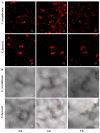

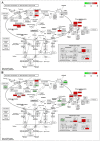
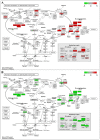

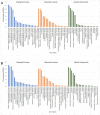
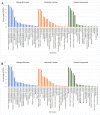


References
-
- Retamales J.B., Hancock J.F. Blueberries. Volume 27 Cabi; Cambridge, MA, USA: 2018.
-
- Agricultural Marketing Resource Center Blueberries. [(accessed on 5 March 2020)]; Available online: https://www.agmrc.org/commodities-products/fruits/blueberries.
-
- Shi M., Loftus H., McAinch A.J., Su X.Q. Blueberry as a source of bioactive compounds for the treatment of obesity, type 2 diabetes and chronic inflammation. J. Funct. Foods. 2017;30:16–29. doi: 10.1016/j.jff.2016.12.036. - DOI
-
- Davies K., Espley R. Opportunities and challenges for metabolic engineering of secondary metabolite pathways for improved human health characters in fruit and vegetable crops. N. Z. J. Crop Hortic. Sci. 2013;41:154–177. doi: 10.1080/01140671.2013.793730. - DOI
MeSH terms
Substances
Grants and funding
LinkOut - more resources
Full Text Sources
Other Literature Sources
Research Materials
Miscellaneous

